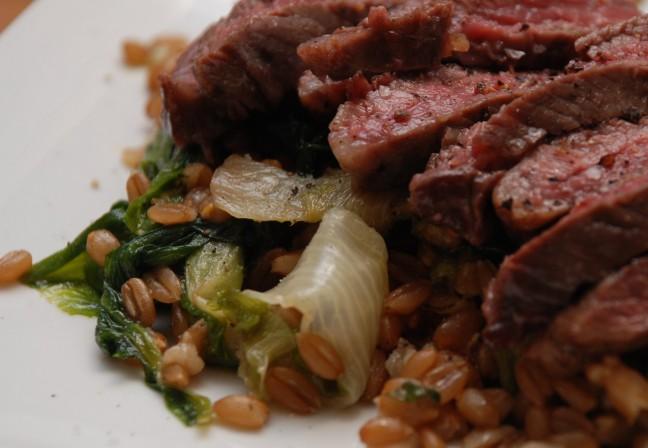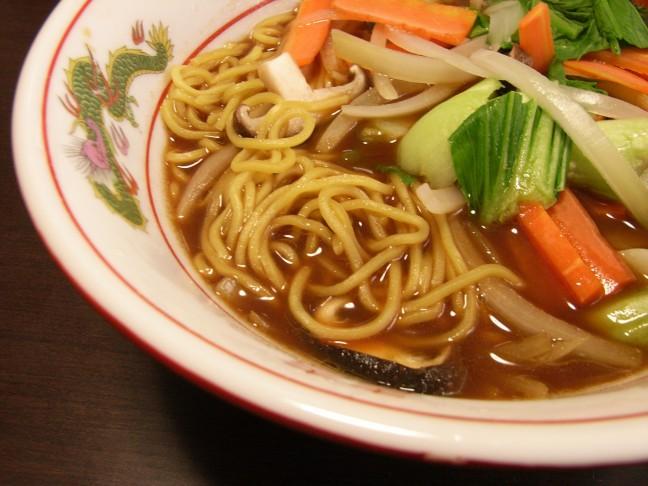Sometimes during a busy semester, it can seem like you’re just living from one packaged meal to the next. With work, exams and a social life, how could anyone possibly find time to cook a meal from scratch? But as you load up your grocery cart with frozen and “just add water” convenience meals, are you paying attention to what they’re made of?
Not all convenience foods are created equally. Many packaged foods are loaded with saturated fat, sugar and sodium to make them more appealing. There are easy ways to identify these products and replace them with more nutrient-dense varieties.
When buying packaged foods, always read the label. Food labels can sometimes seem daunting with all the information they contain, but if you’re not following a special diet, there are only a few things you need to note before you toss an item in your cart.
To determine how many calories you are getting, start by looking at the serving size. Many packaged foods contain multiple “servings” in one box, so you must multiply the number of calories by the number of servings. For example, a package of Maruchan Ramen noodles in chicken flavor contain 190 calories per serving and 2 servings per package. 190 x 2 = 380 calories per package.
Because most of us need around 2000 calories per day, you should try to choose convenience meals that are between 300-600 calories per package. That way, you can round out your meal with a piece of fruit or a glass of milk while staying within about a third of your calories for the day.
The next thing you should note on the label is the saturated fat content. The Dietary Guidelines for Americans recommend that saturated fats be kept as low as possible and not exceed 10% of your total calories. Saturated fat is often listed in grams, and a food is considered “lean,” or a good choice, when it has 4.5g of saturated fat or less per package.
You also want to look out for the trans fat content. Trans fats should also be kept as low as possible. Look for trans fat-free labels for products that have <0.5 g of trans fats. Trans fats can be found in foods that contain partially hydrogenated vegetable oils.
Sodium is another item listed on food labels. Many processed foods add lots of salt to their products, and for some people eating too much of it is linked to hypertension (high blood pressure). The recommended amount of sodium per day is no more than 2300 mg. When choosing a processed food, look for products that have less than 800mg for the entire package. Keep an eye out for tags like “low-sodium” or “no added salt” to find options that contain 800 mg or less.
Dietary fiber is not an essential nutrient, but it may help you maintain a healthy weight by helping you feel fuller longer. A packaged food that contains more than 2.5g of fiber is a good source. Look for products that contain whole grains to make finding high fiber convenience foods in the grocery aisles easier.
Sometimes you might feel like you don’t even have time to read a label. For those cases, I’ll recommend some of my favorite pre-packaged products: Healthy Choice Fresh Mixers (they make several whole wheat pasta dinners), Green Giant frozen vegetable packages (they make small boxes conveniently portioned to serve just one or two people) or Progresso soups (they carry many low-sodium options in a variety of flavors). Also, don’t forget that dried pastas come in whole wheat varieties; you can buy brown rice instead of white, and you can purchase low-sodium sauces to make your semi-homemade meals healthier.
Everyone gets busy during the school year, and not everyone has the time to cook – using these tips will help make sure you stay healthy and keep performing at the highest level all the way through your final exams.
For more information on healthy eating e-mail the column at [email protected].
This week’s recipe combines several healthy convenience items to make one tasty dinner in a flash.
Easy Shrimp Fra Diavolo
Yield: 4 servings
16 ounces whole wheat linguine
16 ounces frozen shrimp
1 jar canned mushrooms, drained
1 tablespoon olive oil
1 tablespoon pre-minced garlic
2.5 cups low-sodium marinara sauce
1 teaspoon crushed red pepper flakes
Bring a pot of water to a boil and cook pasta as directed.
Cook frozen shrimp according to package directions in microwave.
In a skillet, combine oil and garlic; cook 1-2 minutes.
Add marinara sauce and red pepper flakes.
Add mushrooms and cook over medium heat until heated through, about 3-5 minutes.
Drain pasta and shrimp. Toss with sauce and serve.



















